Influence of Ti-Si-N Nanocomposite Coating on Heat Radiation Resistance of Fireproof Fabrics
Abstract
:1. Introduction
2. Materials
- -
- Ti-Si—titanium layer with 10% at of silicon,
- -
- (Ti,Si)N—titanium silicon nitride layer, TiN with Si3N4 admixture.
3. Testing Stage and Methodology
- -
- Time of the heat flux effect on the sample, corresponding to the 2nd-degree burn of the protected body of the rescuer according to the RHTI (radiant heat transfer index) criterion (i.e., based on the specific amount of heat transferred by the sample) [27];
- -
- Time of reaching pain threshold (60 °C criterion) which corresponds approximately to a 2nd-degree burn according to Henriques criterion [27];
- -
- Temperatures during a simulated firefighter body test;
- -
- Temperatures on the surfaces of individual layers during the measurement;
- -
- Heat flux passing through the sample of personal protective equipment and reaching the simulated body of the rescuer during the test;
- -
- The amount of accumulated energy in the sample.
- -
- The stage (Figure 12) consists of:
- -
- Supporting structure with instrumentation, locating the measurement plane at a height convenient for the person conducting the measurement and securing the rest of the elements in space;
- -
- Sliding mechanisms that enable the position of the radiators and their mountings to be changed;
- -
- Radiators—a source of thermal impact;
- -
- A sample—a package of personal protective equipment or a single material;
- -
- Set of sleeve elements tensioning and supporting the sample, fixing the set of sleeve elements of the sample;
- -
- Diffuser (thermal screen) to avoid exposure of the sample to radiation before starting the measurement;
- -
- Climate chamber;
- -
- Stabilizing thermal plate with a temperature similar to that of human skin to simulate the body of a firefighter and used as an auxiliary wall;
- -
- Heat flux sensor—gSKIN®-XP (greenTEG AG, Zurich, Switzerland);
- -
- SBG01 heat flux meter (Hukseflux, Delft, The Netherlands);
- -
- K-type thermocouples (Premier Farnell UK Ltd., Leeds, UK);
- -
- Data acquisition system: a computer, NI 9237 bridge analog module (National Instruments, Austin, TX, USA), NI 9214 thermocouple module (National Instruments, Austin, TX, USA), NI cDAQ-9174 (National Instruments, Austin, TX, USA) insulated connection terminal, software dedicated to the stand (Standard Service Program for CompactDAQ Systems, National Instruments, Austin, TX, USA);
- -
- Data acquisition system: Flir T 430sc thermal imaging camera, software dedicated to the station (Flir ResearchIR Max v. 4.40.1.6, Wilsonville, OR, USA);
- -
- Peltier PT-31 ultrathermostat (A Kruss Optronic, Hamburg, Germany).
4. Results and Discussion
5. Conclusions
Author Contributions
Funding
Institutional Review Board Statement
Informed Consent Statement
Data Availability Statement
Conflicts of Interest
References
- Purser, D.A.; Stec, A.A.; Hull, T.R. Fire scenarios and combustion conditions. In Fire Toxicity; Stec, A., Hull, R., Eds.; Woodhead Publishing: Cambridge, UK, 2010; pp. 26–47. [Google Scholar]
- Bahadori, A. Material Selection for Thermal Insulation. In Thermal Insulation Handbook for the Oil, Gas, and Petrochemical Industries; Bahadori, A., Ed.; Gulf Professional Publishing: Houston, TX, USA, 2014; pp. 239–301. [Google Scholar]
- Gorman, J.M.; Regnier, M.; Abraham, J.P. Heat exchange between the human body and the environment: A comprehensive, multi-scale numerical simulation. In Advances in Heat Transfer, 1st ed.; Abraham, J.P., Gorman, J.M., Minkowycz, W.J., Eds.; Elsevier: Amsterdam, Holland, 2020; Volume 52, pp. 197–247. [Google Scholar]
- Rossi, R. Clothing for protection against heat and flames. In Woodhead Publishing Series in Textiles, Protective Clothing; Wang, F., Gao, C., Eds.; Woodhead Publishing: Cambridge, UK, 2014; pp. 70–89. [Google Scholar]
- Fasano, A.; Sequeira, A. Blood and Heat Transfer. In Hemomath. MS&A (Modeling, Simulation and Applications); Fasano, A., Sequeira, A., Eds.; Springer: Cham, Switzerland, 2017; Volume 18, pp. 227–265. [Google Scholar]
- Morega, A.; Morega, M.; Dobre, A. Hyperthermia and ablation. In Computational Modeling in Biomedical Engineering and Medical Physics; Morega, A., Morega, M., Dobre, A., Eds.; Academic Press: Cambridge, MA, USA, 2021; pp. 249–294. [Google Scholar]
- Bernard, T.; Luecke, C.; Schwartz, S.; Kirkland, K.; Ashley, C. WBGT Clothing Adjustments for Four Clothing Ensembles Under Three Relative Humidity Levels. J. Occup. Environ. Hyg. 2005, 2, 251–256. [Google Scholar] [CrossRef] [PubMed]
- Fanger, P.O. Thermal comfort. Analysis and applications in environmental engineering. In Thermal Comfort. Analysis and Applications in Environmental Engineering; Danish Technical Press: Copenhagen, Denmark, 1970; pp. 244–255. [Google Scholar]
- Sawada, S.-I.; Kuklane, K.; Wakatsuki, K.; Morikawa, H. New development of research on personal protective equipment (PPE) for occupational safety and health. Ind. Health 2017, 55, 471–472. [Google Scholar] [CrossRef] [Green Version]
- Yamauchi, M.; Sakuma, S. Development of bioassay system for evaluation of materials for personal protective equipment (PPE) against toxic effects of ionizing radiations. Ind. Health 2017, 55, 580–583. [Google Scholar] [CrossRef] [Green Version]
- Jaworski, M.; Abeid, S. Thermal conductivity of gypsum with incorporated phase change material (PCM) for building applications. J. Power Technol. 2011, 91, 49–53. [Google Scholar]
- Chitrphiromsri, P.; Kuznetsov, A.V. Modeling Heat and Moisture Transport in Fire-fighter Protective Clothing during Flash Fire Exposure. Heat Mass Transf. 2005, 41, 206–215. [Google Scholar]
- Mangala, J.; Bapan, A. Advances in Nanotechnology Based Functional, Smart and Intelligent Textiles: A Review. In Comprehensive Nanoscience and Nanotechnology, 2nd ed.; Andrews, D.L., Lipson, R.H., Nann, T., Eds.; Academic Press: Cambridge, MA, USA, 2019; pp. 253–290. [Google Scholar]
- Jin, L.; Cao, M.L.; Yu, W.; Hu, J.Y.; Yoon, K.J.; Park, P.K.; Li, Y. New Approaches to Evaluate the Performance of Firefighter Protective Clothing Materials. Fire Technol. 2018, 54, 1283–1307. [Google Scholar] [CrossRef] [Green Version]
- Pey, J.; Monllor, P.; Rodríguez, C.; Canal, J. Bases for innovation in fire-resistant textile materials. Fire Technol. 2004, 40, 34–52. [Google Scholar]
- Ziaja, J.; Koprowska, J.; Janukiewicz, J. Using Plasma Metallisation for Manufacture of Textile Screens Against Electromagnetic Fields. Fibers Text. East. Eur. 2008, 16, 64–66. [Google Scholar]
- Shizhi, L.; Yulong, S.; Hongrui, P. Ti-Si-N films prepared by plasma-enhanced chemical vapor deposition. Plasma Chem. Plasma Process. 1992, 12, 287–297. [Google Scholar] [CrossRef]
- Diserens, M.; Patscheider, J.; Levy, F. Mechanical properties and oxidation resistance of nanocomposite TiN–SiNx physical-vapor-deposited thin films. Surf. Coat. Technol. 1999, 120–121, 158–165. [Google Scholar] [CrossRef]
- Kauffmann, F.; Baohua, J.; Dehm, G.; Gao, H.; Arzt, E. A quantitative study of the hardness of superhard nanocrystalline titanium nitride/silicon nitride coating. Scr. Mater. 2005, 52, 1269–1274. [Google Scholar] [CrossRef]
- Kauffmann, F.; Dehm, G.; Schier, V.; Schattke, A.; Beck, T.; Lang, S.; Arzt, E. Microstructural size effects on the hardness of nanocrystalline TiN/amorphous-SiNx coatings prepared by magnetron sputtering. Thin Solid Film. 2005, 473, 114–122. [Google Scholar] [CrossRef]
- Morgiel, J.; Mania, R.; Rakowski, W.; Major, Ł.; Grzonka, J. Elaboration of Magnetron Deposition Conditions of TiN/Si3N4 Nanocomposite Coatings. Maint. Probl. 2006, 61, 33–42. [Google Scholar]
- Morgiel, J.; Mania, R.; Grzonka, J.; Rogal, Ł.; Janus, A.M.; Zientara, D. Consolidating conditions of Cr–Si compacts and their microstructure. Arch. Mater. Sci. Eng. 2007, 28, 673–676. [Google Scholar]
- Dąbrowski, M.; Morgiel, J.; Grzonka, J.; Mania, R.; Zimowski, S. (Cr,Si)N/TiN coatings on sintered carbide turning inserts. Elektronika 2009, 50, 71–73. [Google Scholar]
- Miedzińska, D.; Stankiewicz, M.; Goeleta, R.; Marszałek, M. Research on Influence of TiSi(N) Reflective Coating Thermal Resistance on Energy Absorption of Fireproof Textile Coupled with Auxetic Fabric. Eng. Trans. 2019, 67, 253–270. [Google Scholar]
- Mania, R.; Marszałek, K.; Morgiel, J.; Wolański, R. TiN-Si3N4 layers applied to protective fabrics by magnetron technique. Elektronika 2014, 55, 19–22. [Google Scholar]
- Bartkowiak, G.; Dąbrowska, A. Assessment of the Thermoregulation Properties of Textiles with Fibres Containing Phase Change Materials on the Basis of Laboratory Experiments. Fibers Text. East. Eur. 2012, 20, 47–52. [Google Scholar]
- Vesna, M.; Matković, P.; Salopek-Čubrić, I.; Skenderi, Z. Thermal resistance of polyurethane-coated knitted fabrics before and after weathering. Text. Res. J. 2014, 84, 2015–2025. [Google Scholar]
- Gurudatt, K.; De, P.; Sarkar, R.K.; Bardhan, M.K. Studies on Influence of Blowing Agent in Polymeric Coating Formulations on Thermal Resistance of Coated Textiles. J. Ind. Text. 2001, 31, 103–122. [Google Scholar] [CrossRef]
- Wang, M.; Zhang, M.; Pang, L.; Yang, C.; Zhang, Y.; Hu, J.; Guozhong, W. Journal of Colloid and Interface Science Regular Article Fabrication of highly durable polysiloxane-zinc oxide (ZnO) coated polyethylene terephthalate (PET) fabric with improved ultraviolet resistance, hydrophobicity, and thermal resistance. J. Colloid Interface Sci. 2019, 537, 91–100. [Google Scholar] [CrossRef] [PubMed]
- ASTM D4108. Test Method for Thermal Protective Performance of Materials for Clothing by Open-Flame Method; ASTM International: West Conshohocken, PA, USA, 1987. [Google Scholar]
- Song, G.; Barker, R.; Thompson, D. Comparison of Methods Used to Predict the Burn Injuries in Tests of Thermal Protective Fabrics. J. Astm Int. 2005, 2, 1–10. [Google Scholar] [CrossRef]
- Stoll, A.M.; Chianta, M.A. Method and Rating System for Evaluation of Thermal Protection. Aerosp. Medicat. 1969, 40, 1232–1238. [Google Scholar]
- Stoll, A.M.; Chianta, M.A.; Piergallini, J.R. Skin damage due to heat transfer by conduction. Fire Mater. 1980, 4, 45–49. [Google Scholar] [CrossRef]
- Guowen, S.; Sumit, M.; Rossi, R.M. Effects of various factors on performance of thermal protective clothing. In Woodhead Publishing Series in Textiles, Thermal Protective Clothing for Firefighters; Guowen, S., Sumit, M., Rossi, R.M., Eds.; Woodhead Publishing: Cambridge, UK, 2017; pp. 163–182. [Google Scholar]
- Wang, F.; Lai, D.; Shi, W.; Fu, M. Effects of fabric thickness and material on apparent ‘wet’ conductive thermal resistance of knitted fabric ‘skin’ on sweating manikins. J. Therm. Biol. 2017, 70, 69–76. [Google Scholar] [CrossRef] [PubMed]
- Młynarczyk, M.; Zielińska, K. Specialised Clothing for Firefighters in Poland—A Comparison of the Latest Set with the One Currently Used. Fibres Text. East. Eur. 2020, 4, 95–100. [Google Scholar]
- Krucińska, I.; Skrzetuska, E.; Kowalski, K. Application of a Thermal Mannequin to the Assessment of the Heat Insulating Power of Protective Garments for Premature Babies. Autex Res. J. 2018, 19, 134–146. [Google Scholar] [CrossRef] [Green Version]
- Rajkishore, N. Introduction to manikins. In Woodhead Publishing Series in Textiles, Manikins for Textile Evaluation; Rajkishore, N., Rajiv, P., Eds.; Woodhead Publishing: Cambridge, UK, 2017; pp. 3–24. [Google Scholar]
- Fanglong, Z.; Weiyuan, Z. Thermal Performance Assessment of Heat Resistant Fabrics Based on a New Thermal Wave Model of Skin Heat Transfer. Int. J. Occup. Saf. Ergon. 2006, 12, 43–51. [Google Scholar]
- Łapka, P. Application of a biequational bioheat transfer model in the skin for assessment of thermal characteristics of protective garments. Chem. Ind. 2017, 1, 97–101. [Google Scholar]
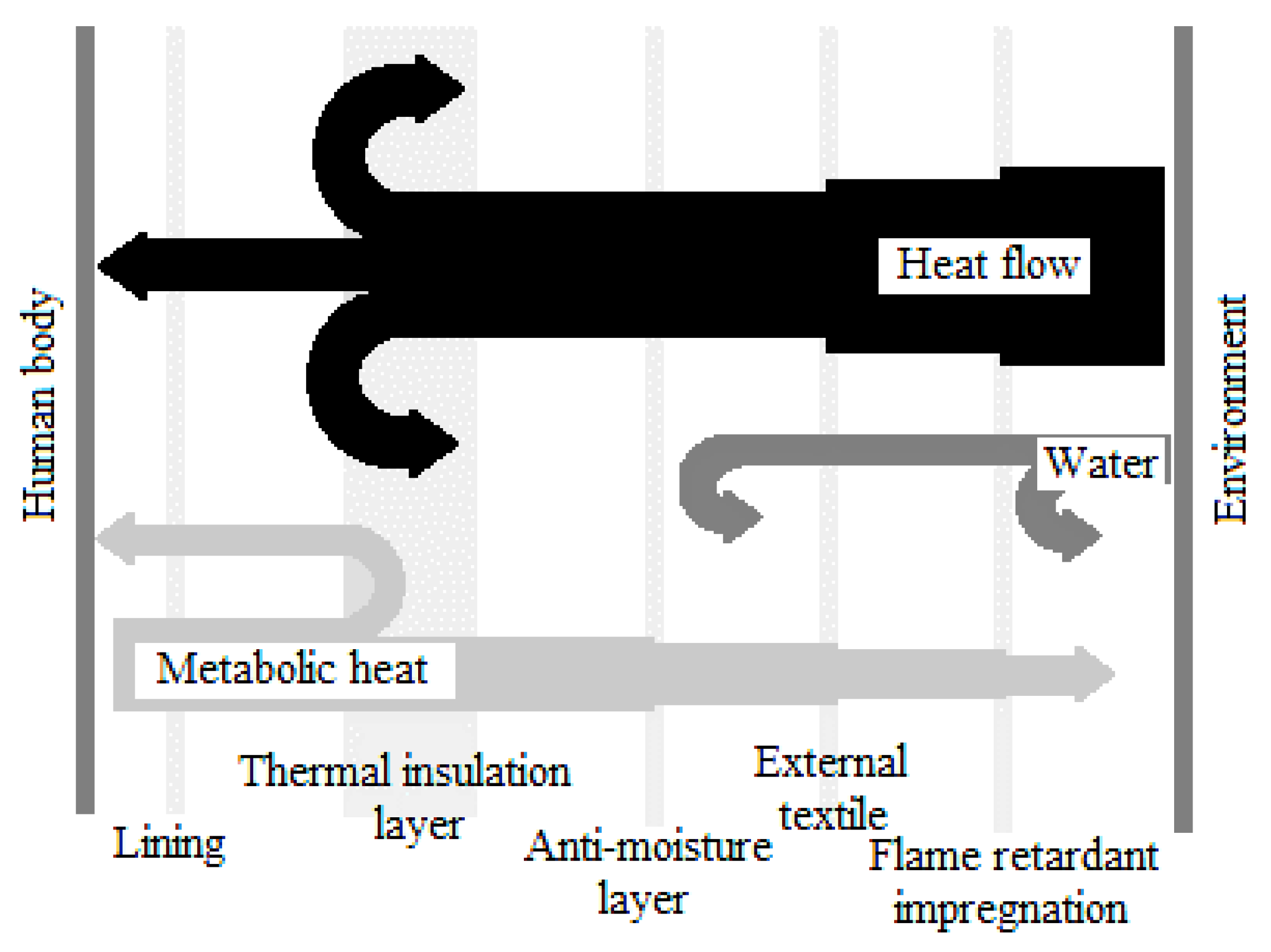
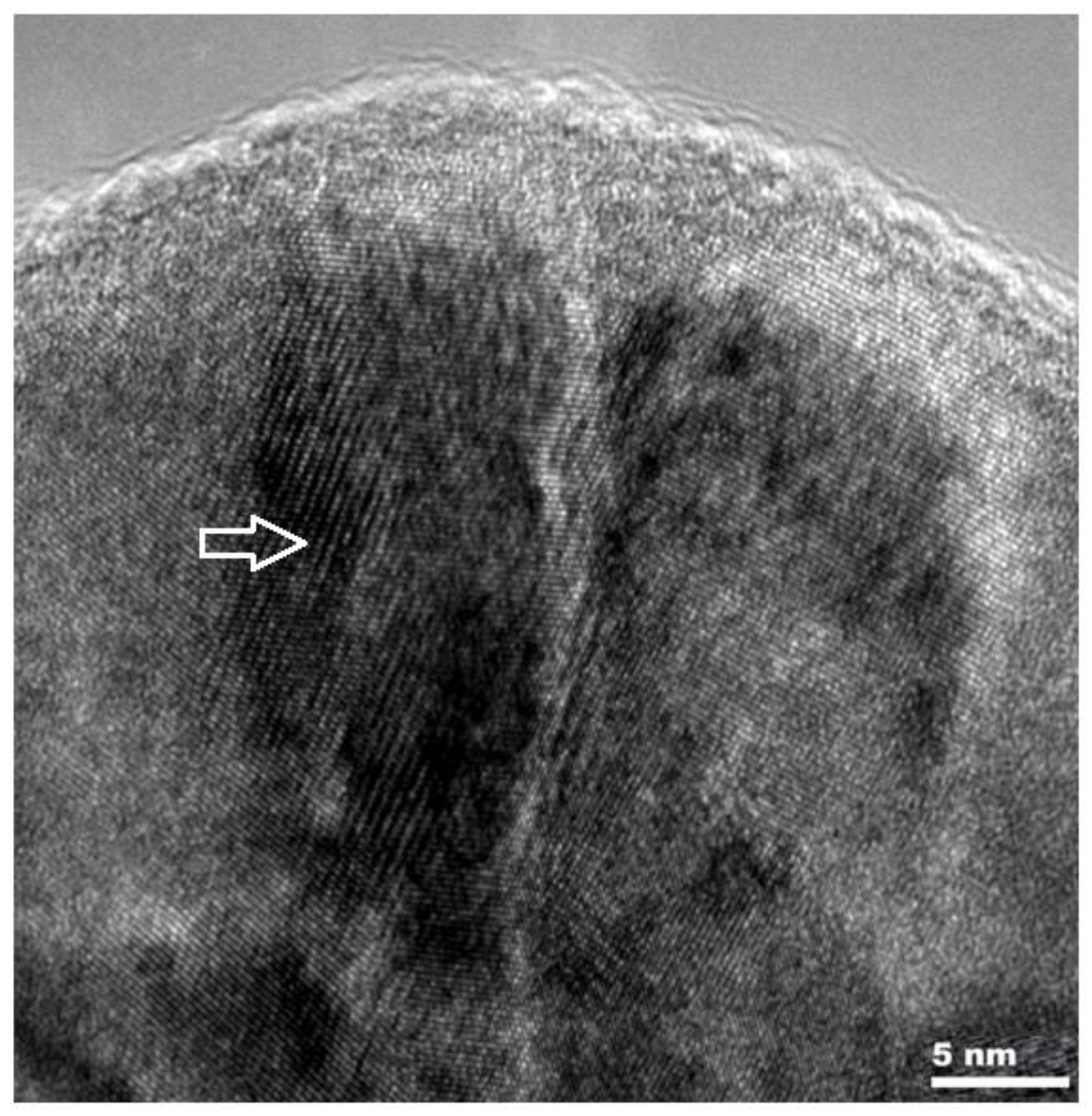
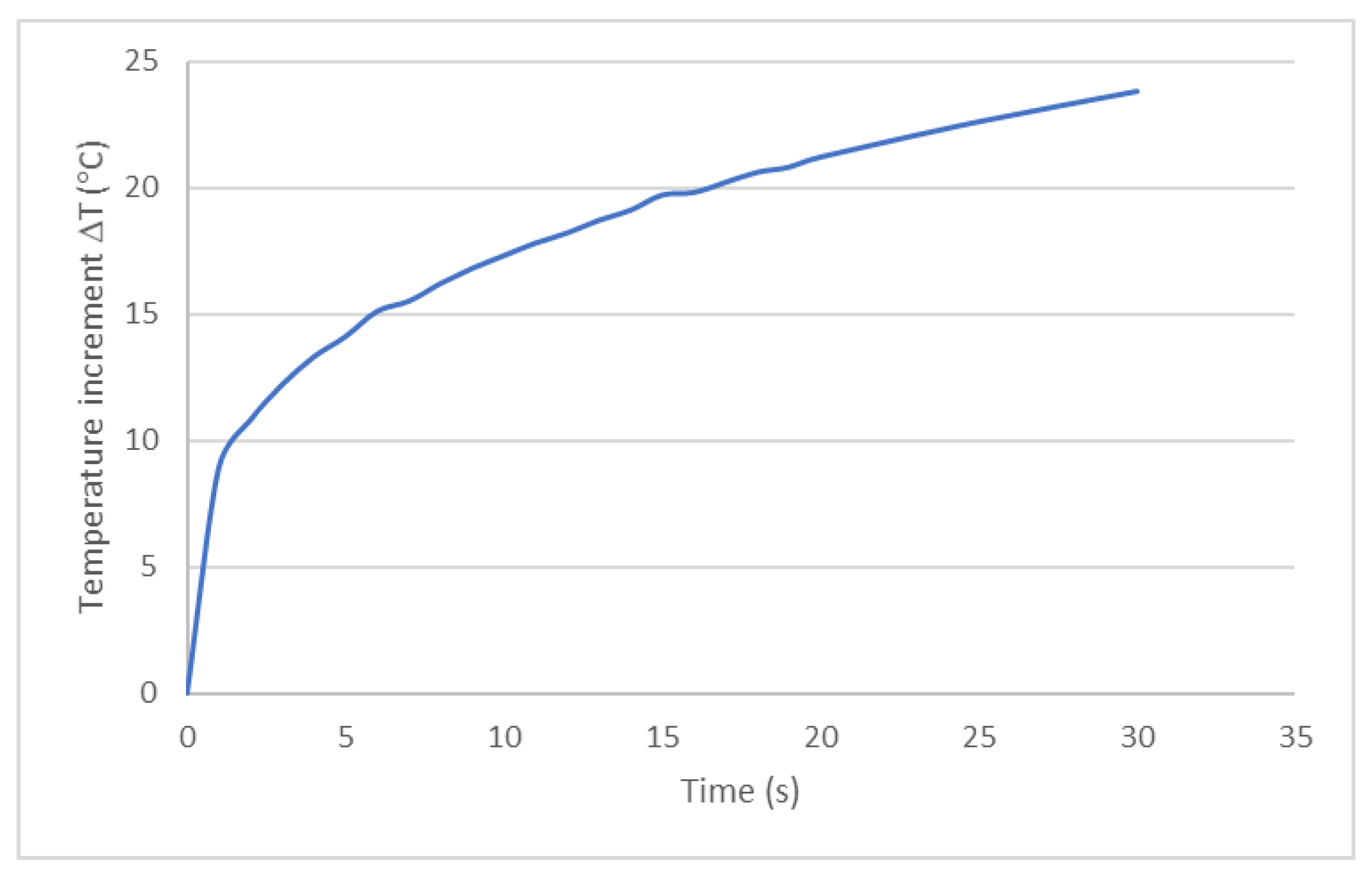
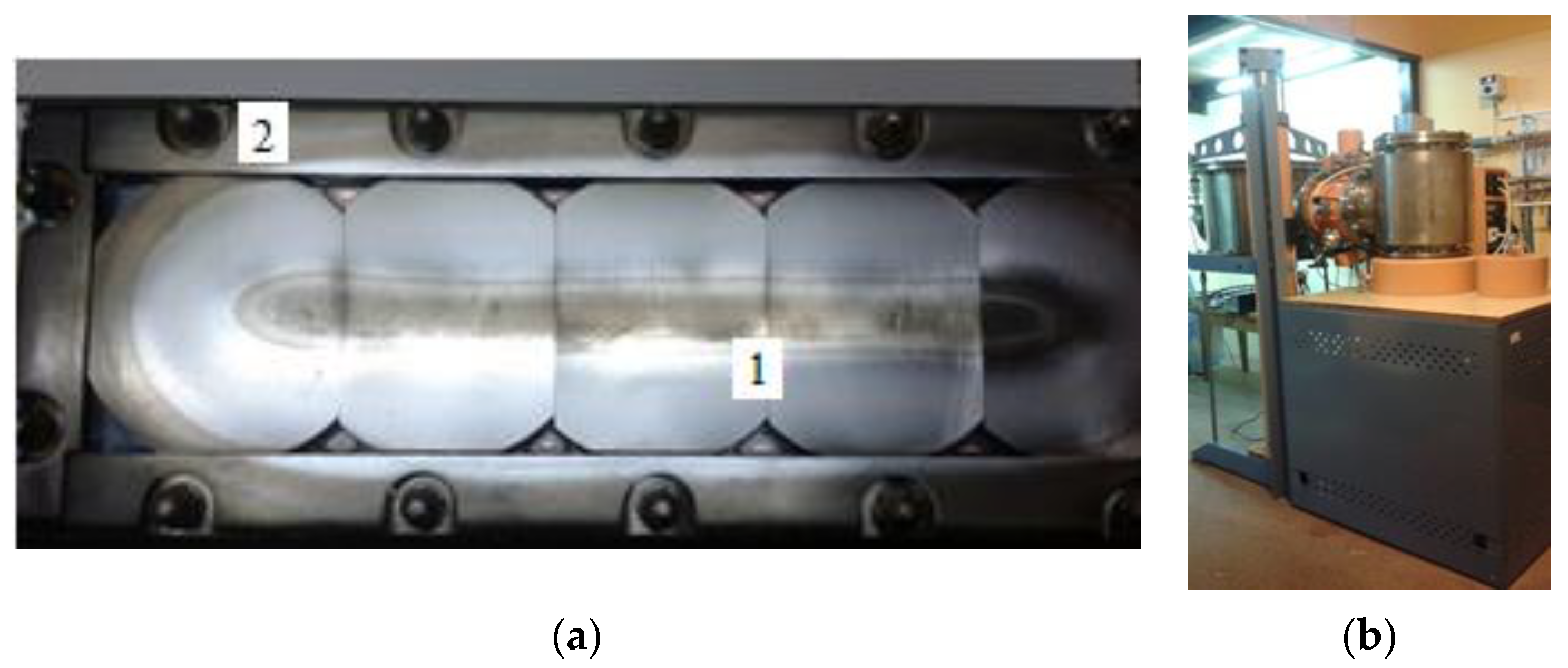
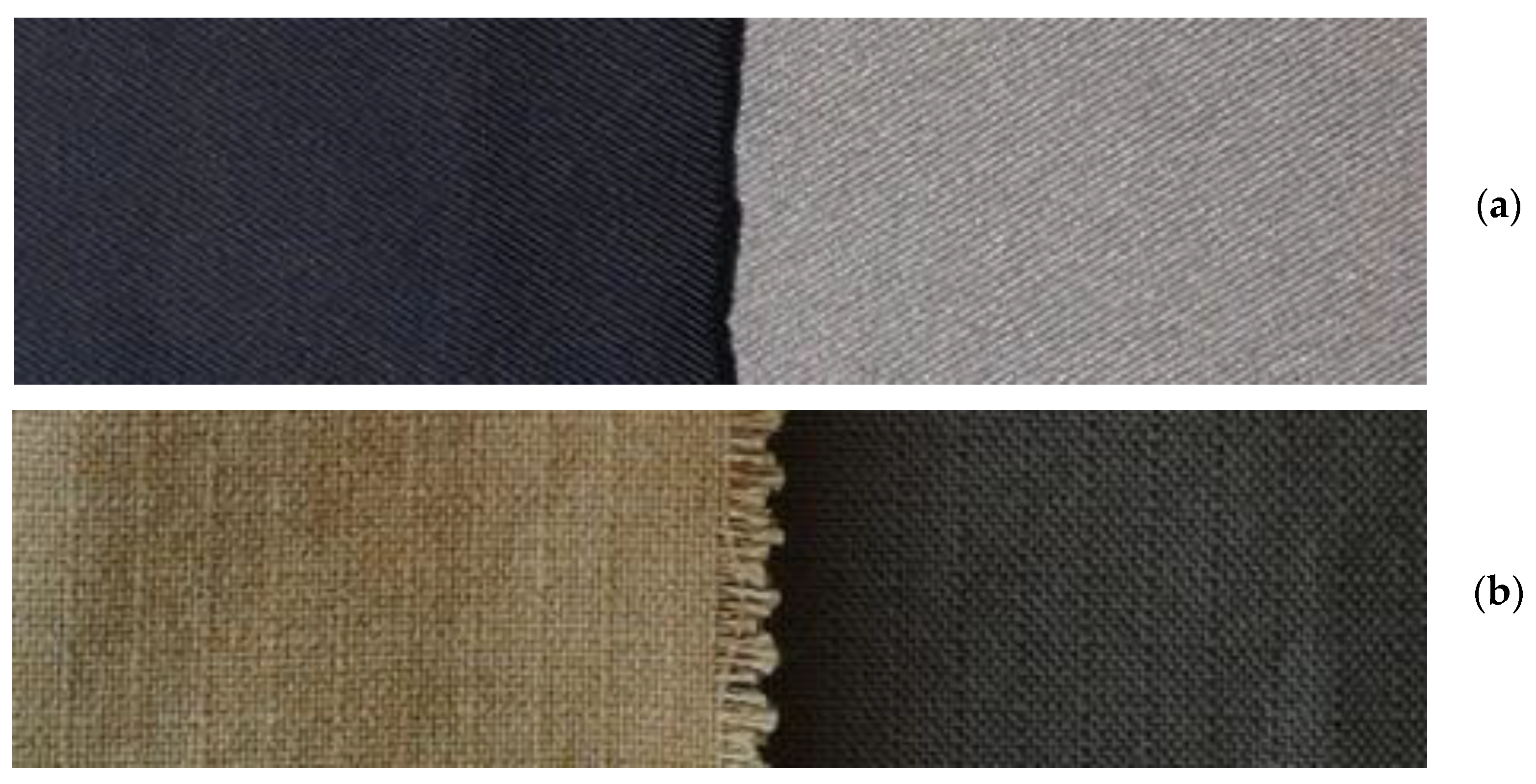
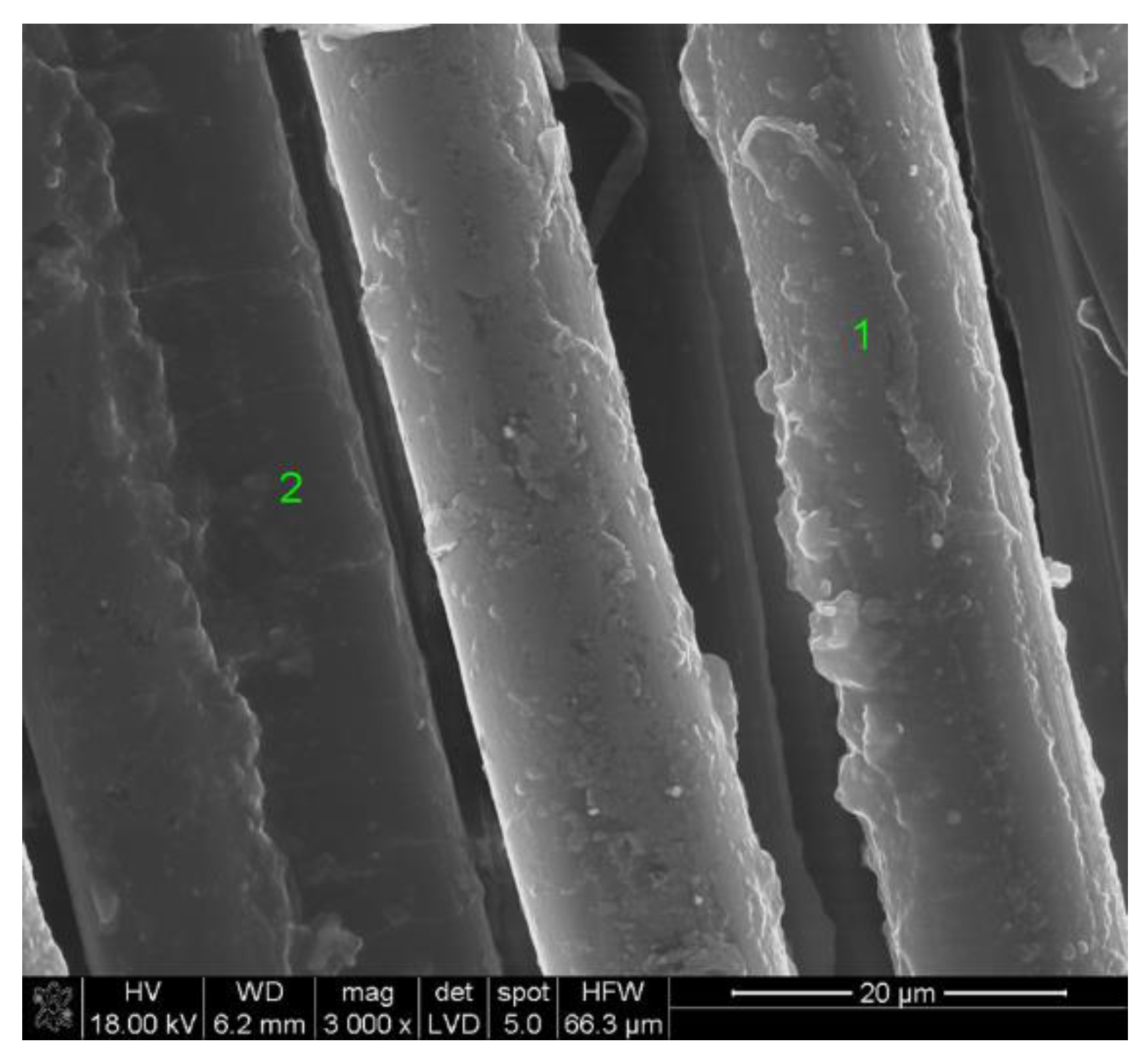

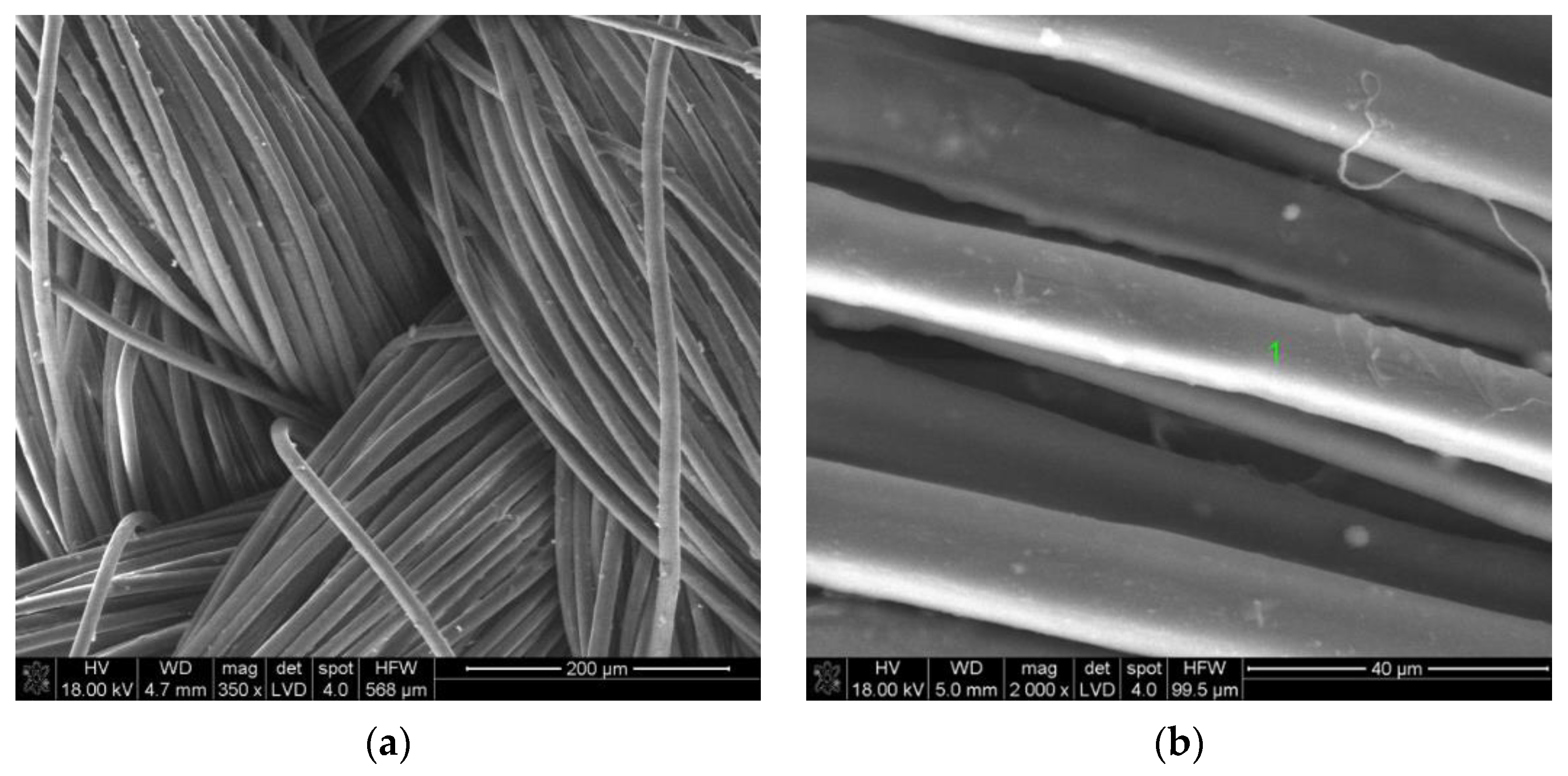
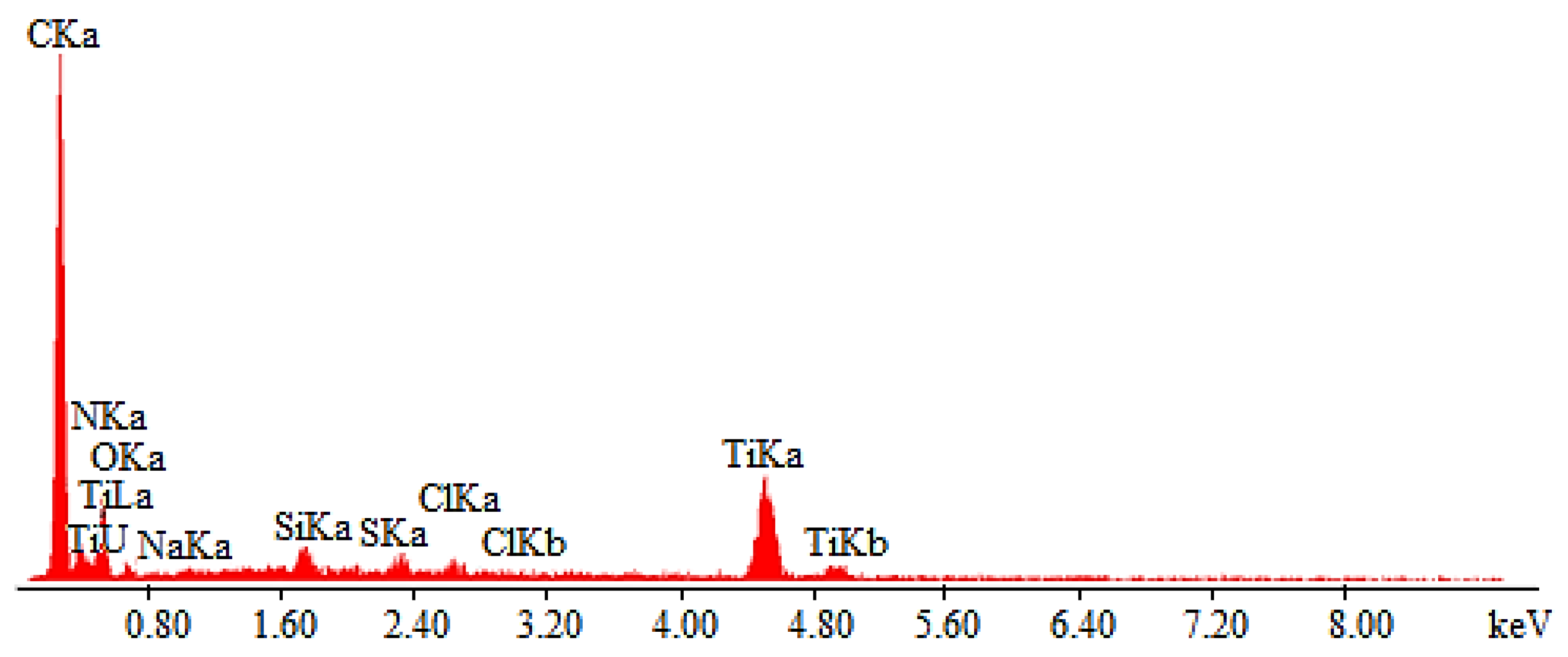

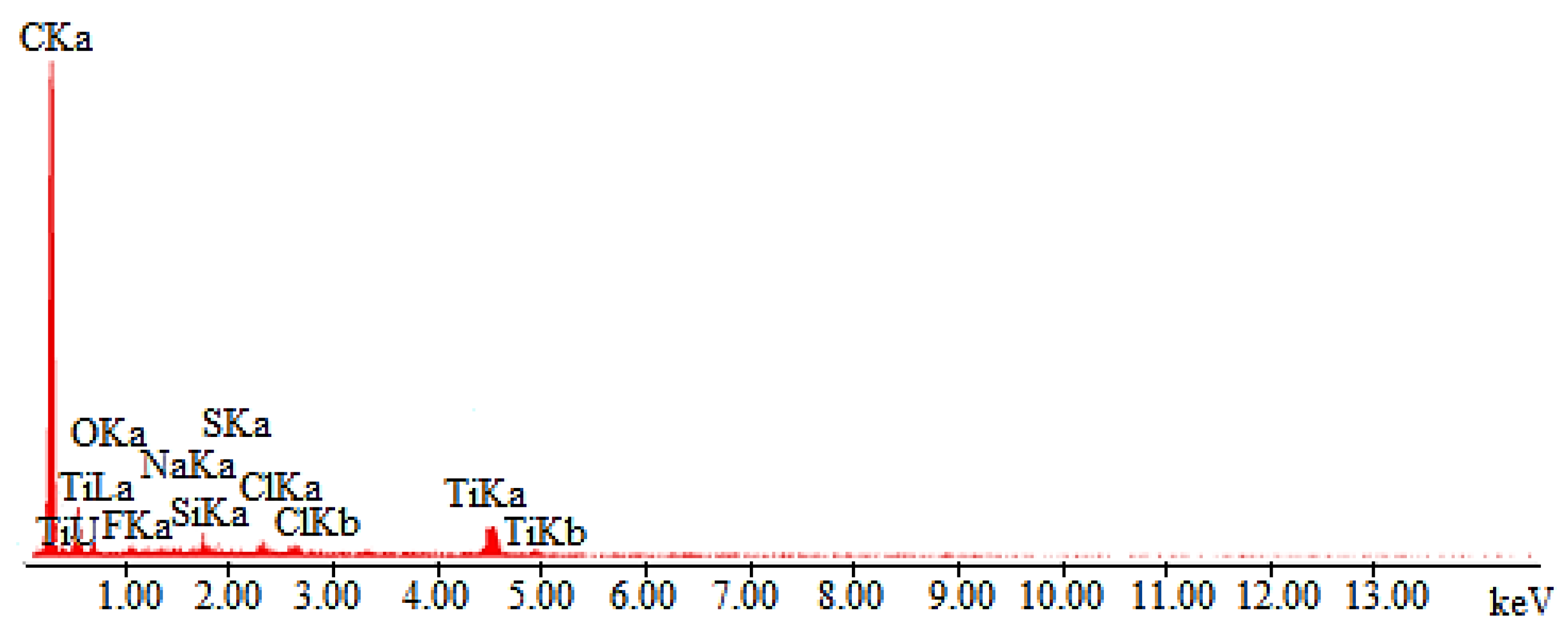
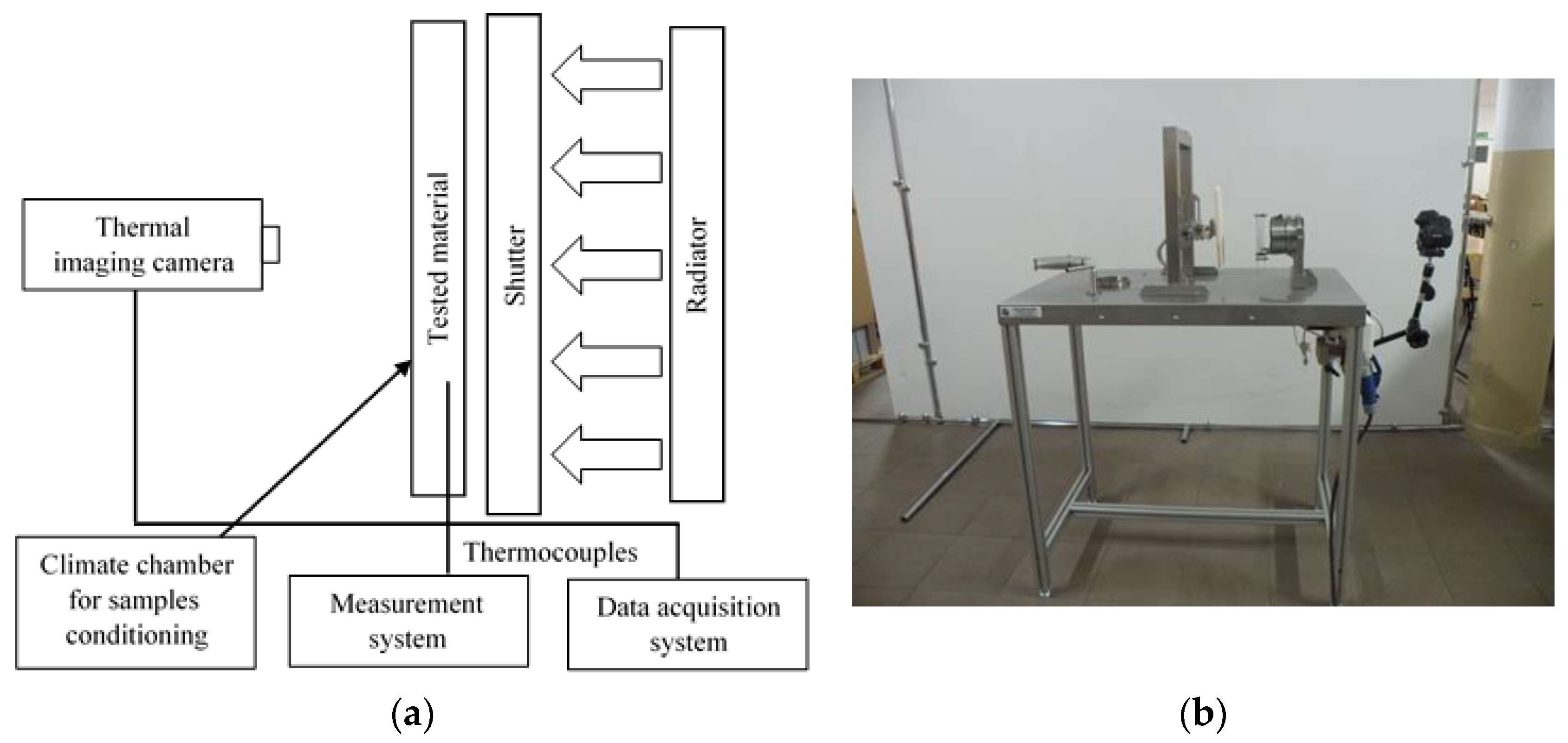

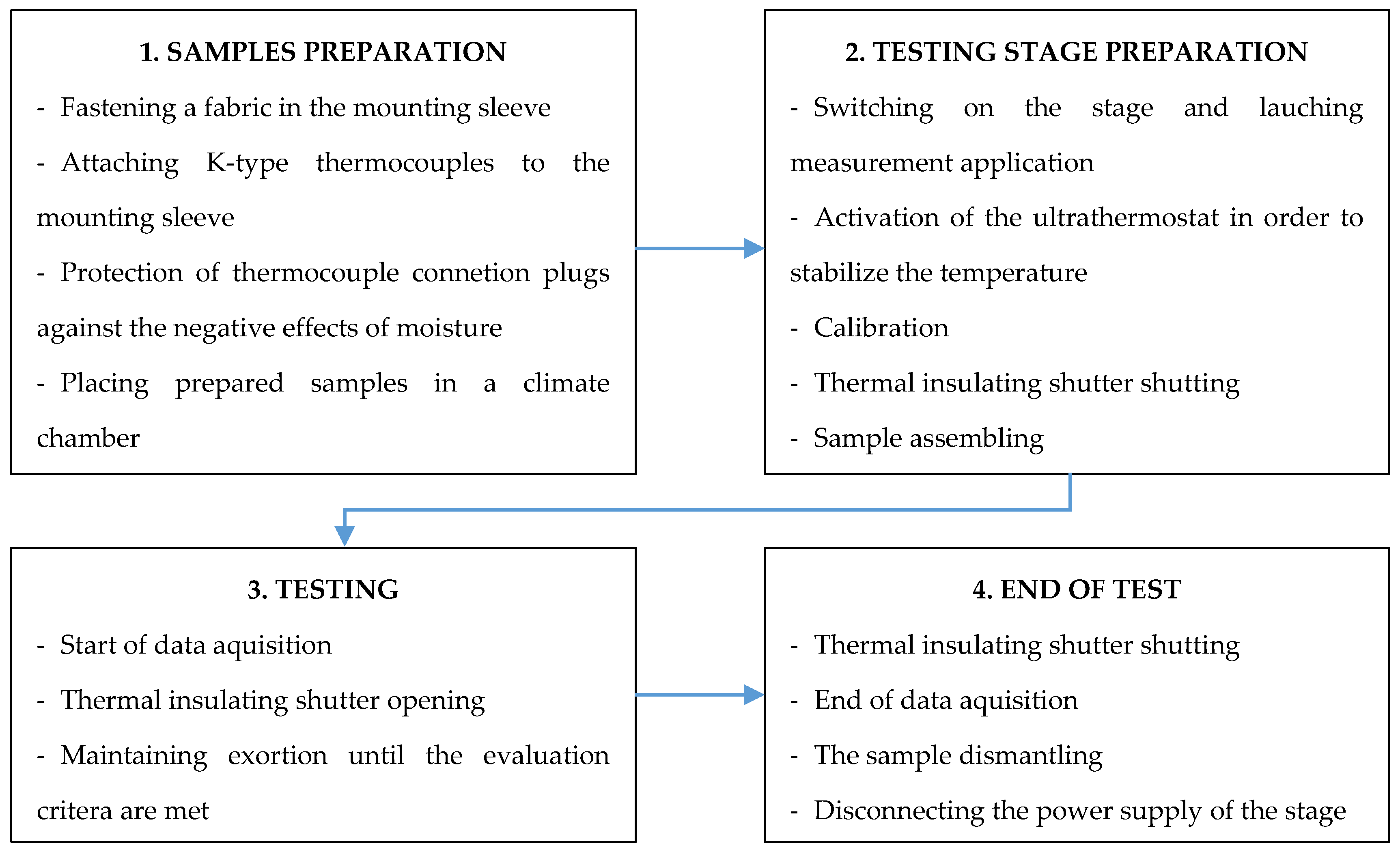

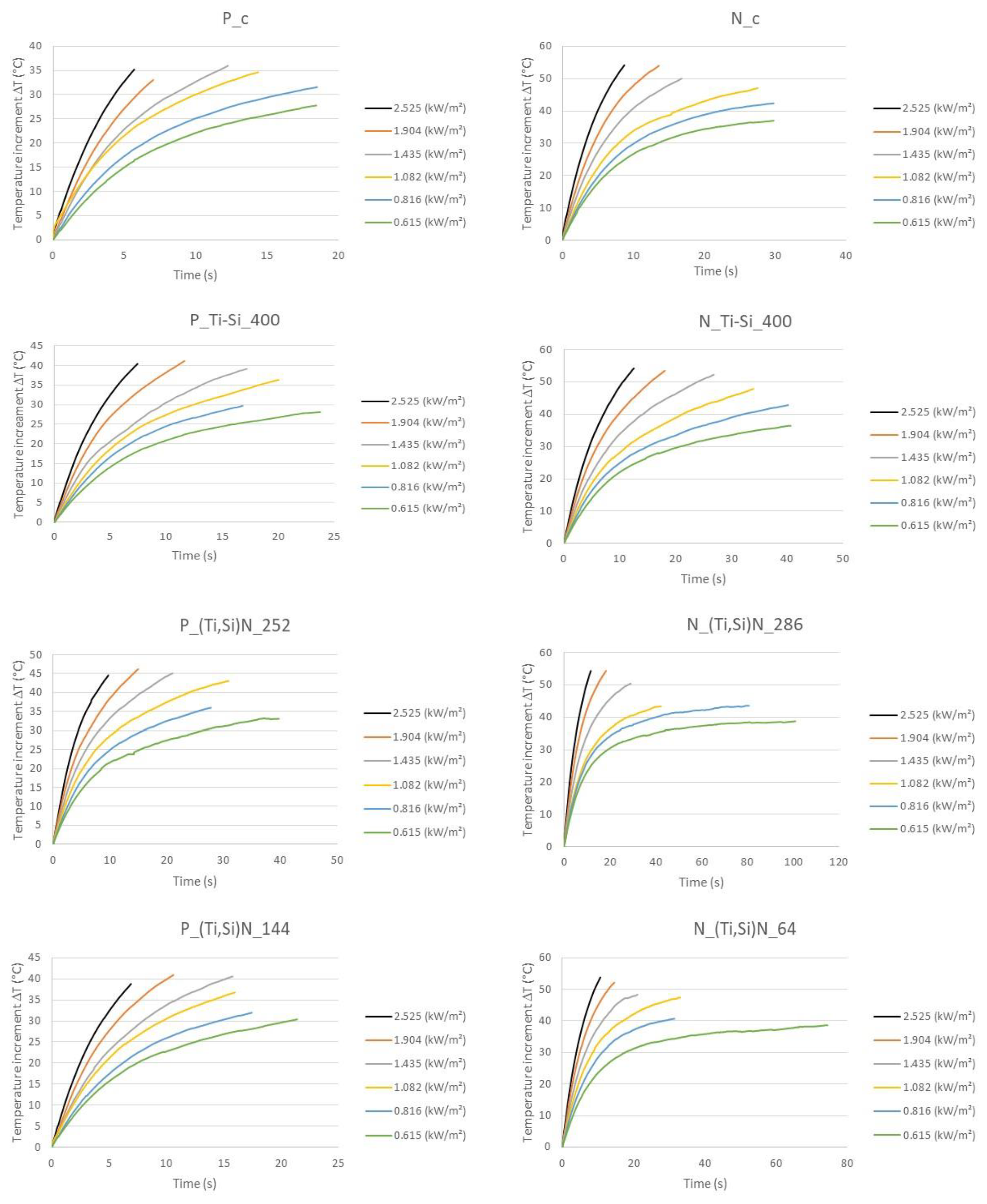

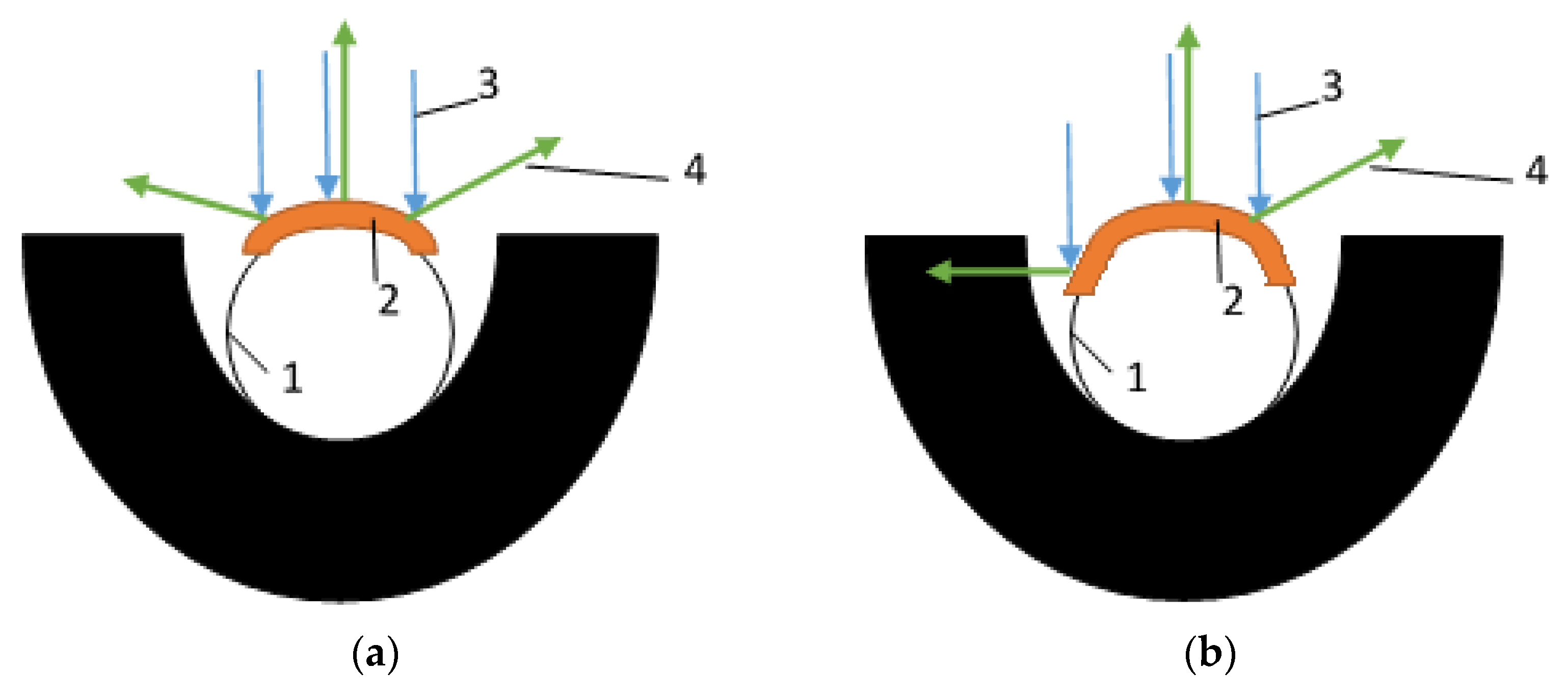
| Composition | NATAN | PROTON | ||
|---|---|---|---|---|
| Content, % | Nomex® 1,7 dtex | 75 | PBI | 40 |
| Content, % | Kevlar | 23 | Paraaramid | 58 |
| Content, % | P140 | 2 | antystatic | 2 |
| Surface density, g/m2 | 195 | 195 | ||
| Sample Symbol | P_c | N_c | P_Ti-Si_400 | N_Ti-Si_400 | P_(Ti,Si)N_252 | N_(Ti,Si)N_286 | P_(Ti,Si)N_144 | N_(Ti,Si)N_64 |
|---|---|---|---|---|---|---|---|---|
| Base material | PROTON | NATAN | PROTON | NATAN | PROTON | NATAN | PROTON | NATAN |
| Layer composition | No layer | No layer | TiSi | TiSi | Ti,Si 18 nm + (Ti,Si)N 21 nm × 6 + Ti,Si 18 nm | Ti,Si 18 nm + (Ti,Si)N 22 nm × 5 + Ti,Si 18 nm | Ti,Si 30 nm + (Ti,Si)N 114 nm | Ti,Si 19 nm + (Ti,Si)N 45 nm |
| Layer thickness [nm] | - | - | 400 | 400 | 252 | 286 | 144 | 64 |
| Layering parameters | ||||||||
| Partial pressures of gases [Pa] | - | - | PAr = 0.116 PN2 = 0.217 | PAr = 0.116 PN2 = 0.217 | PAr = 0.18 PN2 = 0.06 | PAr = 0.18 PN2 = 0.12 | PAr = 0.116 PN2 = 0.101 | PAr = 0.15 PN2 = 0.10 |
| Total pressure PAr + PN2 [Pa] | - | - | 0.333 | 0.333 | 0.24 | 0.30 | 0.217 | 0.25 |
| Electric current intensity M1/M2* [A] | - | - | 1.14/1.07 | 1.14/1.07 | 1.50/1.50 | 1.05/1.05 | 1.14/1.07 | 1.03/1.05 |
| Effective power M1/M2 [kW] | - | - | 0.87/0.71 | 0.87/0.71 | 1.02/0.93 | 0.80/0.71 | 0.87/0.71 | 0.87/0.77 |
| Time of layering | - | - | 2 min in Ar + 20 min in Ar+N2 + 55 min in Ar = 57 min | 2 min in Ar + 20 min in Ar +N2 + 55 min in Ar = 57 min | 1.5 min in Ar + 50 min w Ar + N2 = 51.5 min | 2 min in Ar + 20 min in Ar +N2 + 2 min w Ar = 24 min | 1.5 min in Ar +19.5 min in Ar + N2 = 21 min | 1 min in Ar + 9 min in Ar + N2 = 10 min |
| End temperature [°C] | - | - | 196 | 196 | 140 | 97 | 196 | 140 |
| Pain Threshold Reaching Time (s) | |||||||
|---|---|---|---|---|---|---|---|
| Heat Flux Density (kW/m2) | 0.615 | 0.816 | 1.082 | 1.435 | 1.904 | 2.525 | |
| Sample | P_c | 11.23 | 8.13 | 5.80 | 5.20 | 3.60 | 3.00 |
| P_Ti-Si_400 | 13.13 | 9.10 | 7.20 | 6.37 | 4.00 | 3.03 | |
| P_(Ti,Si)N_252 | 12.70 | 8.80 | 6.76 | 5.60 | 4.03 | 3.10 | |
| P_(Ti,Si)N_144 | 10.70 | 8.10 | 5.87 | 5.16 | 4.00 | 3.03 | |
| N_c | 7.76 | 6.43 | 5.23 | 3.96 | 3.10 | 2.30 | |
| N_Ti-Si_400 | 11.30 | 8.87 | 7.77 | 5.57 | 4.13 | 3.26 | |
| N_(Ti,Si)N_286 | 10.20 | 8.26 | 7.53 | 5.26 | 3.87 | 3.00 | |
| N_(Ti,Si)N_64 | 9.90 | 7.16 | 5.63 | 4.43 | 3.47 | 2.83 | |
Publisher’s Note: MDPI stays neutral with regard to jurisdictional claims in published maps and institutional affiliations. |
© 2021 by the authors. Licensee MDPI, Basel, Switzerland. This article is an open access article distributed under the terms and conditions of the Creative Commons Attribution (CC BY) license (https://creativecommons.org/licenses/by/4.0/).
Share and Cite
Miedzińska, D.; Giełżecki, J.; Mania, R.; Marszalek, K.; Wolański, R. Influence of Ti-Si-N Nanocomposite Coating on Heat Radiation Resistance of Fireproof Fabrics. Materials 2021, 14, 3493. https://doi.org/10.3390/ma14133493
Miedzińska D, Giełżecki J, Mania R, Marszalek K, Wolański R. Influence of Ti-Si-N Nanocomposite Coating on Heat Radiation Resistance of Fireproof Fabrics. Materials. 2021; 14(13):3493. https://doi.org/10.3390/ma14133493
Chicago/Turabian StyleMiedzińska, Danuta, Jan Giełżecki, Ryszard Mania, Konstanty Marszalek, and Robert Wolański. 2021. "Influence of Ti-Si-N Nanocomposite Coating on Heat Radiation Resistance of Fireproof Fabrics" Materials 14, no. 13: 3493. https://doi.org/10.3390/ma14133493
APA StyleMiedzińska, D., Giełżecki, J., Mania, R., Marszalek, K., & Wolański, R. (2021). Influence of Ti-Si-N Nanocomposite Coating on Heat Radiation Resistance of Fireproof Fabrics. Materials, 14(13), 3493. https://doi.org/10.3390/ma14133493








